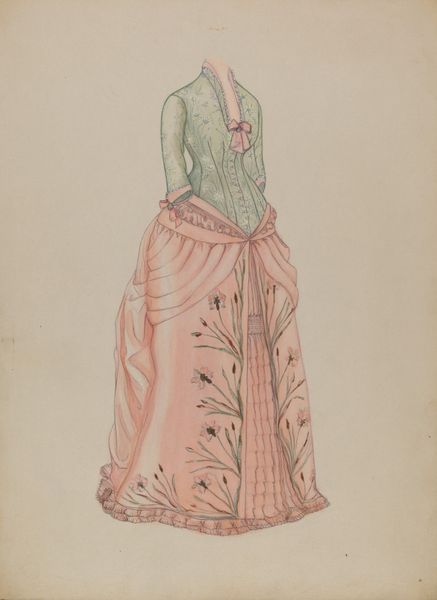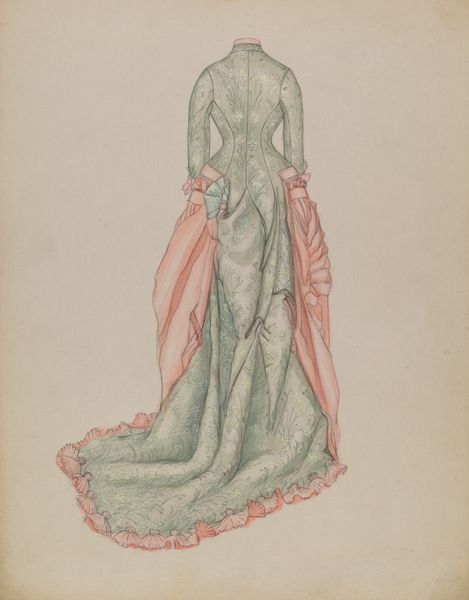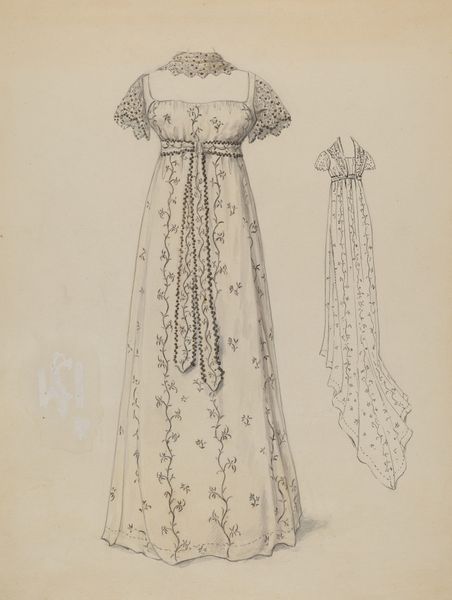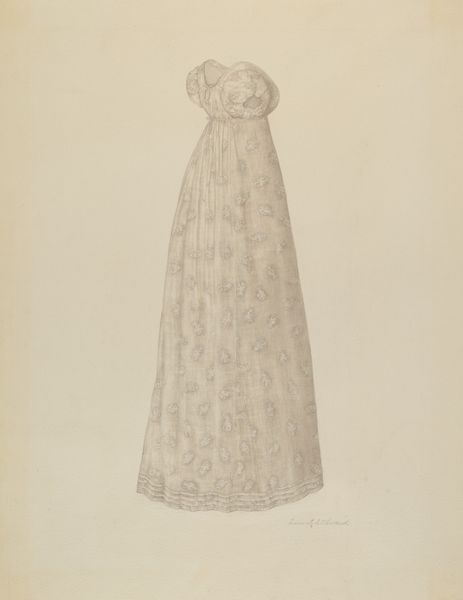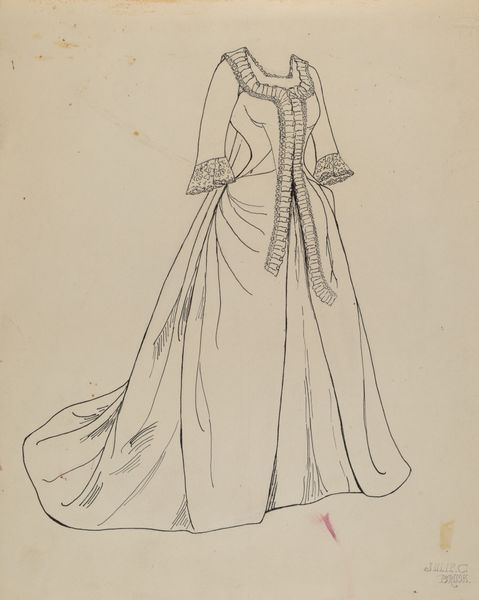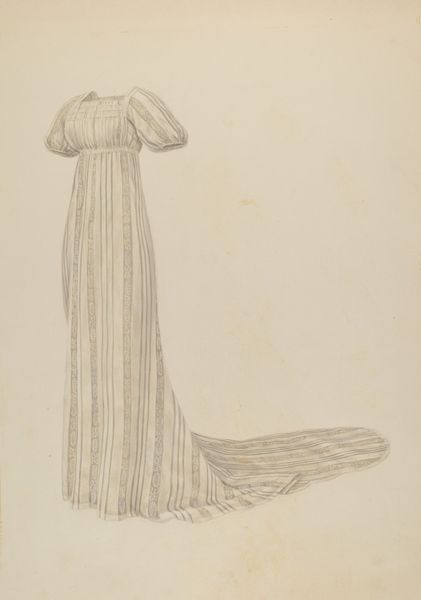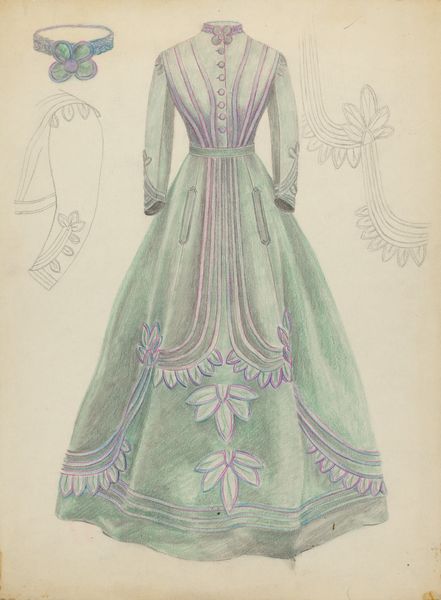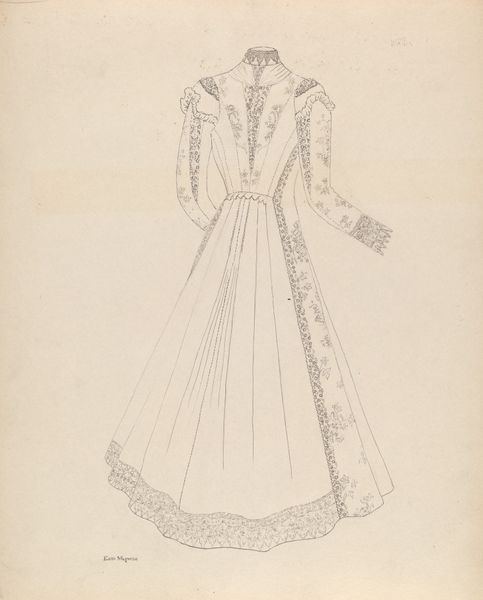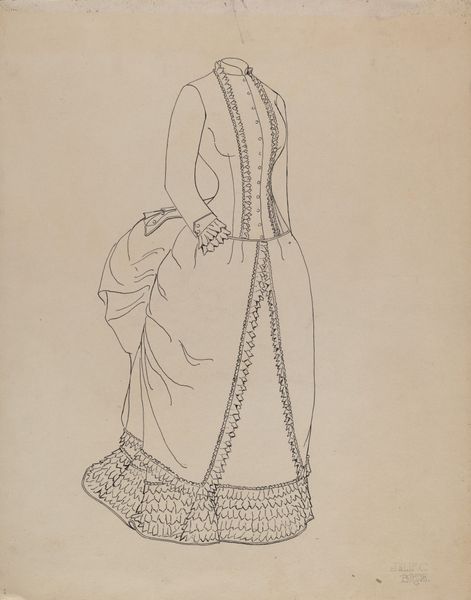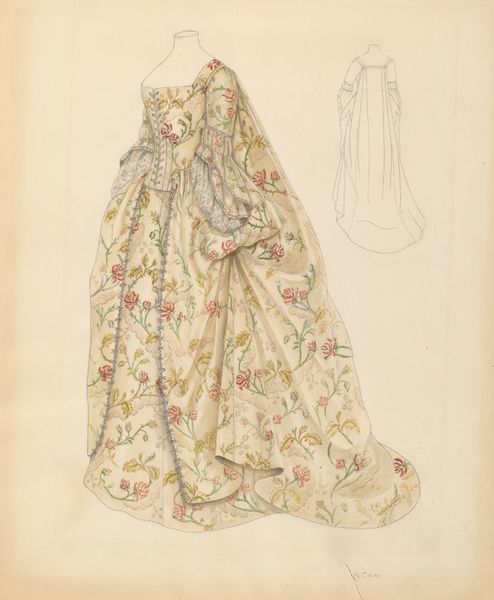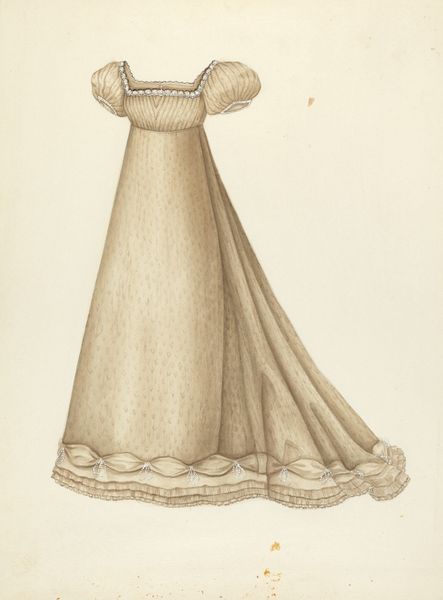
drawing, paper, watercolor, pencil
#
portrait
#
drawing
#
paper
#
form
#
watercolor
#
pencil
#
line
#
watercolour illustration
#
decorative-art
Dimensions: overall: 30.3 x 22.9 cm (11 15/16 x 9 in.)
Copyright: National Gallery of Art: CC0 1.0
Editor: This is Melita Hofmann’s "Court Dress," from around 1936, a drawing in pencil and watercolor on paper. It has such an elegant, almost dreamlike quality. What can you tell me about it? Curator: Well, at first glance, it appears to be a beautiful rendering of formal attire. But considering its creation during the interwar period, we can examine it through a lens of social and political tension. How does Hofmann’s choice to depict such a garment relate to the societal expectations placed on women of that era, particularly within the context of rising political unrest? Editor: That’s interesting! I hadn’t thought about the social implications. The detail is exquisite, yet the color palette is quite muted, almost restrained. Does that say something about its purpose? Curator: Absolutely. The limited color palette could represent the constraints placed upon women in the public sphere. Fashion often becomes a visual battleground. Ask yourself, how does Hofmann use line and form to either reinforce or subvert traditional notions of femininity and power associated with court dress? Is she celebrating it or critiquing its limitations? Editor: I see what you mean! I had only focused on the aesthetics. But considering it in relation to the rise of different political factions at that time makes me look at it differently. Curator: Precisely. Understanding the sociopolitical backdrop is essential for a richer, more critical reading of the artwork. It moves beyond surface beauty, challenging us to confront power structures and societal norms. Editor: That really adds a lot. Now I’m considering the intended audience and its potential political impact, and the role of women overall. Thank you. Curator: My pleasure. Art is a conversation, a dialogue across time. Engaging with its historical and social context makes that conversation much more meaningful.
Comments
No comments
Be the first to comment and join the conversation on the ultimate creative platform.
